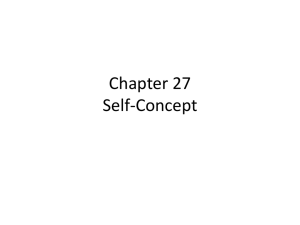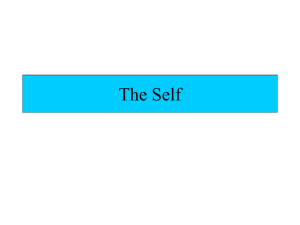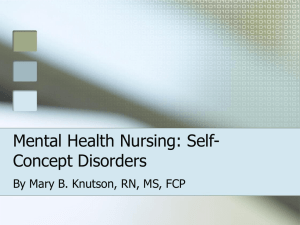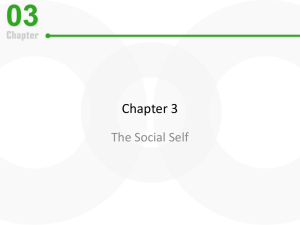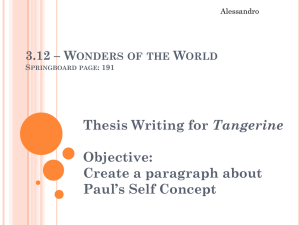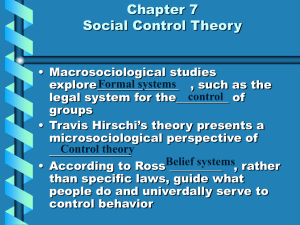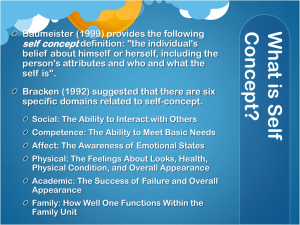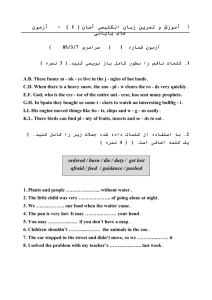دانلود جزوه ی تجسم از بدن
advertisement
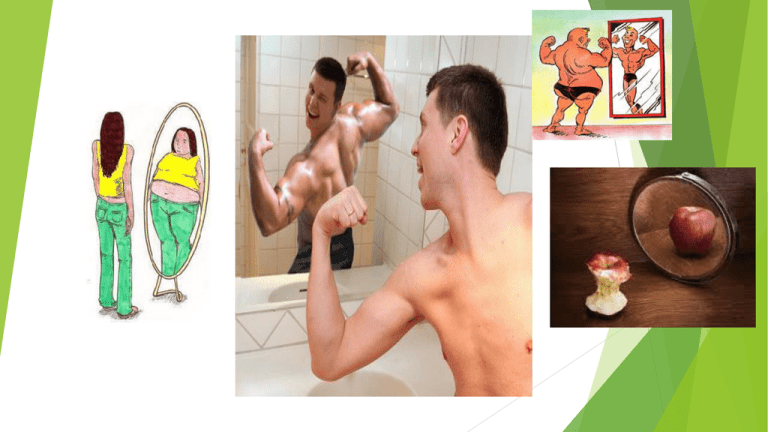
تعاریف تجسم از بدن تصویز ذهنی از جسم بر اساس ادراکات فعلی و گذشته تصویز فرد از جسم خویش و نظرات دیگران نسبت به او یک جریا ن پویاست که بمرور زمان و تکامل تغییر می کند عوامل تاثیرگذار در B.I سازگاری در فرد مفهوم ماهیت بیماری برای فرد تجارب و بیماریهای گذشته بیوگرافی دوره تکاملی اهمیت عضو زمینه فرهنگی محیط عکس العمل افراد به فرد تسهیالت و امکانات نکات مهم: شخص غیر فعال شناخت کافی از جسم خود ندارد تصویر ذهنی فرد الزاما با بدنش سازگار نیست اجسام متصل به فرد جزء B.Iفرد هستند(دستگاه دیالیز ،مانیتورینگ قلبی) عصا ،عینک و ........ متغیرهای تاثیر گذار در B.I مادرزادی :آلبینیسم فیزیوولوژیک :بارداری ،پیری ناگهانی :آمپوتاسیون پنهانی :کلستومی روی افرادB.I انواع تاثیرات )burning ( Appearance body )MI(Body function (estomy) Body structure B.I and development )0-1 : (نوزادیInfancy )1-3 : (نوپاییTodler hood )3-6 :(قبل از مدرسهEarly child hood )6-12 :(دوره مدرسهMiddle child hood )12-18 :(نوجوانیAdolescence )18-40 :(جوانیAdult hood )40-65(Middle age Old age عکس العمل فرد به B.I پاسخ بیمار به B.Iاز خود پاسخ خانواده پاسخ اجتماع پاسخ تیم بهداشتی پاسخ بیمار به B.Iاز خود پاسخ انطباقی: مرحله درک واقعه مرحله مقابله با تغییر مرحله حل یا پذیرش پاسخ غیرانطباقی فرایند پرستای در بیمار با B.Iمختل بررسی: پاسخ به بد شکلی بدن یا محدودیت الگوهای استقالل – وابستگی اعتماد به نفس اجتماعی شدن و ارتباطات اهمیت داشتن شایستگی و صالحیت اهمیت داشتن قدرت فضایل اخالقی ایفای نقش تشخیص پرستاری تصور از بدن آشفته شده اعتماد به نفس پایین ایفای غیر موثر نقش هویت فردی آشفته اضطراب مربوط به تغییر عدم همکاری مربوط به اعتماد به نفس پایین برنامه ریزی به طور واقعی خود را شرح دهد هم قوتها و هم کمبودها با احساسات و نیازهایش به طوری که به طور موثر براورده شود ارتباط برقرار کند مسولیتهای مربوط به نقش را با اطمینان و شایستگی بپذیرد رضایت از زندگی را با توجه به شرایط داشته با شد اجرا بیمار را تشویق به راه رفتن کند تشویق به داشتن ارتباط با دیگران آموزش مراقبت از خود به بیمار تواناییهای بیمار را مرتبا بازگو کند شنونده خوبی باشد Assessing Self-concept Developmental and chronological age Assessing includes questions on identity… body image…self esteem…roles… Patient’s strengths/weaknesses Self-Concept Questionnaire Describe yourself. What are your personal characteristics? What are your strengths? What are your fears or weaknesses? Describe your body. What do you like most about your body? What do you like least about your body? Tell me about some things you do or have done in the past that give you a sense of achievement or accomplishment. Describe the primary roles you fill. How do you feel about your ability to perform these roles? Are these roles satisfying to you? High self-esteem vs Low self-esteem Assertive Self-directed Makes decisions Praises self Speaks clearly Attends to needs Passive “who cares attitude” Excessively Dependent Hesitant to express views Overly Critical of self Monotone voice – lack of emotion & energy Neglects own needs Difficulty making decisions Overly apologetic Avoidance of eye contact Nursing Diagnoses Disturbed body image Low self-esteem; chronic or situational Other Dx in which low self-concept is the etiology: Ineffective health maintenance r/t … Self care deficit r/t … Risk for self-directed violence r/t… Nursing Interventions Nurse is a role model Can a nurse NEGATIVELY affect a client’s selfconcept? Form helping relationship: Focus on client strengths; praise achievements Meet physiological and psychological needs Reduce pain Decrease anxiety Promote positive self-esteem Encourage participation in care Encourage socialization Nursing Interventions NIC Encourage client to recognize and discuss thoughts and feelings Assist client to: Realize everyone is unique Realize impact of illness on self-concept Be aware of negative self-statements and modify them Gain more control Identify positive attributes of self Identify and use personal strengths Nursing Evaluation Outcome criteria addressed???? Behavior and attitude changes will indicate altered self-esteem Long term outcome –can take many months or years Evaluation (NOC) Client should be able to meet the following outcomes: Be comfortable with body image Be able to describe self positively Be able to meet realistic goals Be capable of interacting appropriately with environment and others “Know Thyself” Socrates Nurses need to reflect on their OWN self-concept in order to effectively assist OTHERs. Ask yourself these questions: How do I perceive myself? How do I think others see me? What are my strengths and weaknesses? What are my goals for self-improvement? What does ALL THIS have to do with my professional practice? Summary Self-concept based on 3 components Need to understand how various factors affect self-concept Understand difference between high & low self-esteem Interventions to promote self-concept Evaluate outcome criteria
